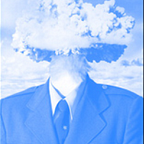Book Review: The Kremlin’s Nuclear Sword: The Rise and Fall of Russia’s Strategic Nuclear Forces 1945–2000.
Steven Zaloga, 2005 pp 304.
Anyone familiar with the work of Steven Zaloga will understand before reading, that one of Zaloga’s strong point is his command of technical details, 2005’s The Kremlin’s Nuclear Shield is no exception. This work narrates the development and deployment of the Soviet nuclear force from Stalin’s initiation of the Soviet atomic weapons project through to its post Cold War decline as the Russian federation suffered economic calamity.
Despite its slim size, at 304 pages including a vast bibliography and appendices the work is quite comprehensive. This becomes apparent when reading with author covering a wide range of aspects in any one page. One of the key points that marks ground-breaking in the West is that it is the first western work to refer to Soviet weapon systems by their Soviet designations rather than those applied by NATO.
Whilst may be novel or interesting it does not necessarily add anything worthwhile, as these designations are not unknown, and this practice serves to somewhat complicate the book as the Soviet designations are frequently given alongside their NATO equivalent. However, it is acceptable to credit Zaloga for this, even if it does not necessarily add to the book itself, because it demonstrates a willingness to see the issue from the ‘other’ side. Further to Zaloga’s credit, the book is well illustrated featuring a large catalogue of images detailing the weapons systems as they were and in some case as the are today, the only minor critique here is that it would have served the book to use colour photographs were possible.
Whilst the work is of a technical bent, Zaloga expends considerable energy discussing as wide an array of topics as possible; ranging from a cast of overlooked soviet scientists to the political intrigue and Cold War paranoia, that led to the development and deployment of the numerous systems. This attempt to cover as many angles as possible is something of a double-edged sword. Firstly, considering no weapon system exists in a vacuum it is important to emphasise context of its development, this helps the reader understand the strategic context into which the weapon is brought. Zaloga does an admirable job of this given the limits of this small book. However, because we are introduced to a cast of competing characters with egos and desires which are explored through the lens of weapons development, it sometimes feels that Zaloga has opted to prefer discussion of the development of the weapons programmes as a technical feat over its development as a human feat. This leads to a sense that we are missing a much more intriguing (and as historians) and more interesting human story.
Considering the book was published in 2005 when there was some limited access to Soviet and Russian archives and before the current freeze in east-west relations we must consider ourselves lucky to have had the opportunity to have this work completed as it is unlikely that this would not be accomplished today. Additionally, 15 years after the work it is reasonable to suggest it would be useful to have a post-script detailing the rebirth of Russian nuclear forces under Putin, as this is not something that is foreseen in the final chapter where it is proposed that Russian nuclear forces will continue to decline due to economic stress.
In summary, as is acknowledged in the blurb, this is an excellent starting point for the further investigation of Soviet and Russian weapons development, however it must be borne in mind that the work is platform-centric and not people-centric.
